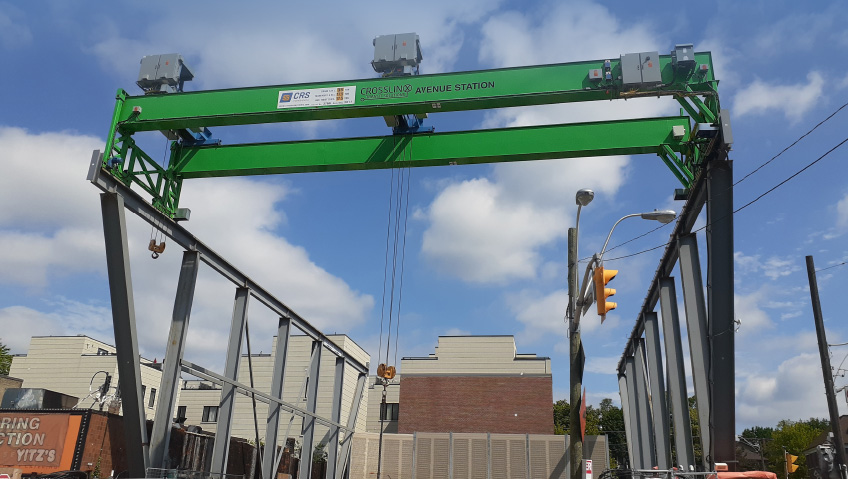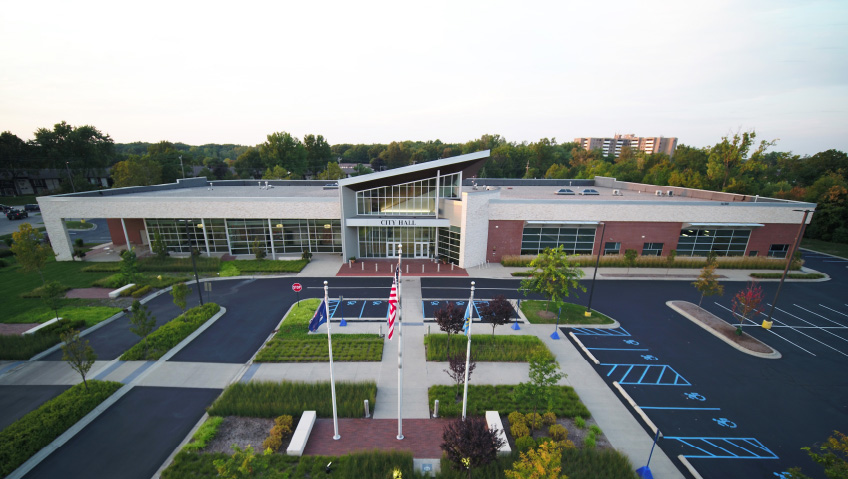On August 10 of this year, Phil Verster, CEO of Metrolinx, the regional transportation agency for the Ontario government, made a major announcement about Toronto’s long-delayed, multi-billion dollar Eglinton Crosstown Light Rapid Transit (LRT) system. Metrolinx, which is overseeing the troubled transit project along with another provincial agency, Infrastructure Ontario, could be in a position to announce an opening date in the near future, said Verster.
Verster’s remarks were dismissed by Crosstown critics who regard the transit line as an over-budget folly that is way behind schedule. Crosstown supporters say the system will provide a plethora of benefits once completed. Everyone agrees that LRT construction—which has been going on for over a decade—has been problematic for drivers, pedestrians, and retail store owners along Eglinton Avenue.
Unlike buses and streetcars, which compete for space with other road traffic, Light Rapid Transit systems are based on dedicated routes. The Crosstown will run 19 kilometers along Eglinton Avenue—a major east-west arterial road in Toronto that bisects Yonge Street—and link to existing subway and bus stops.
While more than half the line is underground, the Crosstown is not a subway; “LRT vehicles are smaller and slower than subways but travel faster and carry more passengers than streetcars or buses. Subways are larger and longer,” explains the Toronto Environmental Alliance.
The roots of the project go back to 1994, when Ontario’s NDP government decided to fund a subway line under Eglinton Avenue West. The new line would augment Toronto’s existing subway system and relieve traffic gridlock while providing inexpensive transportation. Work on the Eglinton West subway commenced but was short-lived. After taking office in Ontario in 1995, the Progressive Conservatives cancelled the project. Ground that had been excavated was filled in.
Toronto Mayor David Miller revived the concept in 2007, throwing his support behind a light-rail network called Transit City that would include an Eglinton line. Politics intervened once more, however, as Miller’s successor, Rob Ford, cancelled the plan and suggested more subways instead. Toronto council dismissed Ford’s concept and voted to forge ahead with a less expensive Light Rapid Transit system (as opposed to a subway) on Eglinton. The Ontario Liberal government hired Crosslinx Transit Solutions (CTS), a consortium of companies, to design and build the new LRT line, and construction began in 2011.
At first, the advent of a new public transit option stirred up much excitement: “New, modern light rail vehicles operating on tracks separated from regular traffic will offer fast, efficient service and improve travel for people across the region by enabling travel up to 60 percent faster than existing bus service. The Eglinton Crosstown LRT will also help fight climate change by managing greenhouse gas emissions from Ontario’s transportation sector. The new LRT line will have 25 stations and stops along Eglinton Avenue between Weston Road and Kennedy Station, and will also link to 54 bus routes, three TTC interchange subway stations, and GO Transit,” stated an Ontario government press release.
The Crosstown will be joined by the Eglinton Crosstown West Extension to push the Light Rapid Transit line into the neighbouring city of Mississauga, Ontario.
Construction crews used four massive Tunnel Boring Machines (TBMs) to dig the 10 kilometer underground portion of the Crosstown. Nicknamed Don, Humber, Dennis, and Lea, each TBM measured 10 meters tall by 6.5 meters wide and weighed 400 tonnes. Operated 24/7 by a team of six, the TBMs carved 5.75 meter wide tunnels 16 to 20 meters below the earth’s surface. Don and Humber tackled the eastern portion of the LRT while Dennis and Lea took on the western portion. Yonge Street was the subterranean destination for all the machines.
On August 17, 2016, the Province of Ontario announced that the 10 kilometer underground portion of the Crosstown LRT was complete.
“Today, tunnel boring machines (TBMs) Don and Humber, boring the eastern segment tunnels, arrived at Yonge Street having traveled 3,300 meters from where they started just east of Brentcliffe Road in September 2015. In total, Don and Humber installed 26,178 precast concrete tunnel segments, which formed 4,363 rings. TMBs Dennis and Lea completed tunnelling on the western segments of the Crosstown when they reached Yonge Street in May 2016,” stated a press release from the provincial government.
Of course, tunnel boring was only one aspect of the construction work involved in creating the LRT. In early 2019, Equipment Journal magazine described the development of an LRT station underneath an existing subway stop at Yonge Street and Eglinton Avenue.
“The station is being built using the cut and cover method, where the excavation is performed, then covered with wooden decking while crews continue to dig and build the station below… Crosslinx is constructing 26-metre deep caissons to facilitate the underpinning of the subway station. In total, building the LRT will require about 450 micro piles and 500 tiebacks. Concrete strength in the caisson piles is a higher strength capacity at about 30 to 40 MPa concrete. The filler piles are about 4 to 10 MPa concrete,” explained Equipment Journal.
This LRT station was slated to be the largest stop on the line, with customers able to move easily from Light Rapid Transit to subway and buses at the stop, or vice-versa, without paying an extra fare.
By July, 2021, over 90 percent of the rail track for the LRT line had been installed. On May 20 of this year, a Toronto Star journalist offered insights about a test ride they took on part of the line which was near-completion.
“Spending time on the Eglinton Crosstown LRT, it’s obvious what the public is missing each time its opening is delayed. The trains feel like a sleeker, steadier, more hi-tech version of Toronto’s streetcars—but without the traffic. Whizzing along the street-level portion of the line, past Mount Dennis Station, sun streaming in through the windows, is a transit experience unlike anything else in Toronto… The stations are big, bright, and easy to navigate… The tunnels in the underground portions are lighter and smoother than what Toronto commuters are used to—and so far without rats, at least as far as this reporter could see,” noted the Star.
Impressive, given all the difficulties the project has faced. Endless construction work has entailed barriers, blocked routes, detours, and scaffolding on Eglinton Avenue. Some local retailers went out of business as customers found it difficult to reach their establishments by foot or car, with street parking nonexistent in some areas. Drivers in general found the trip down Eglinton Avenue slow and maddening. Eglinton Avenue East was chosen as Ontario’s worst road in 2019 by the CAA, the advocacy and service organization for Canadian motorists and in 2023, it was Eglinton Avenue West’s turn to be recognized (in number two spot) on the CAA worst roads of Ontario list.
This spring, construction reams realized an 800-metre section of Crosstown track was up to three millimeters off-spec, a variance sufficient to derail an LRT car. This tiny error had to be corrected and the track refitted to proper measurements. Water damage was reported at other stations. Inspections revealed more than 250 quality-control issues that needed to be addressed across the whole system. In total, the LRT budget has grown to nearly $13 billion (more than double original estimates) while opening dates for the Crosstown have been continuously rolled back.
In addition to technical issues, there has been intense conflict between Crosslinx Transit Solutions and Metrolinx and Infrastructure Ontario. For a variety of reasons, Crosslinx has sued these organizations three times and threatened to stop all work at one point. The Star article describing a ride on the LRT said the “sour relationship” between these bodies posed “the biggest threat” to the transit line.
A blistering July 5, 2023 column in the Toronto Sun described the LRT as “Toronto’s White Elephant” and warned other cities not to emulate the project.
“Numerous small businesses along the route folded as the construction choked off access to their customers, combined with the additional financial burden of the [COVID] pandemic… Residents along the route have endured years of construction noise, dirt and cars idling outside their apartments and homes attempting to navigate along or across Eglinton Ave., which at many intersections became an almost comical maze of traffic cones and cement barriers resembling a go-cart course,” wrote the Sun.
Crosstown advocates point out that many previous transit projects in Toronto, especially subways, have also wreaked havoc, albeit for shorter periods of time. Problems surrounding the Eglinton Crosstown will be resolved and the system will eventually benefit the public, say LRT supporters.
“I think the LRT will produce winners and losers in all neighbourhoods… But I think overall it will have a positive impact. [The new line] will give people better access to transit and improve their quality of life,” noted Toronto councillor Josh Matlow, who represents the Eglinton Avenue area, to the City Centre Mirror on September 27, 2021.
“Improved transit is the dream, construction is the nightmare,” added Matlow.






